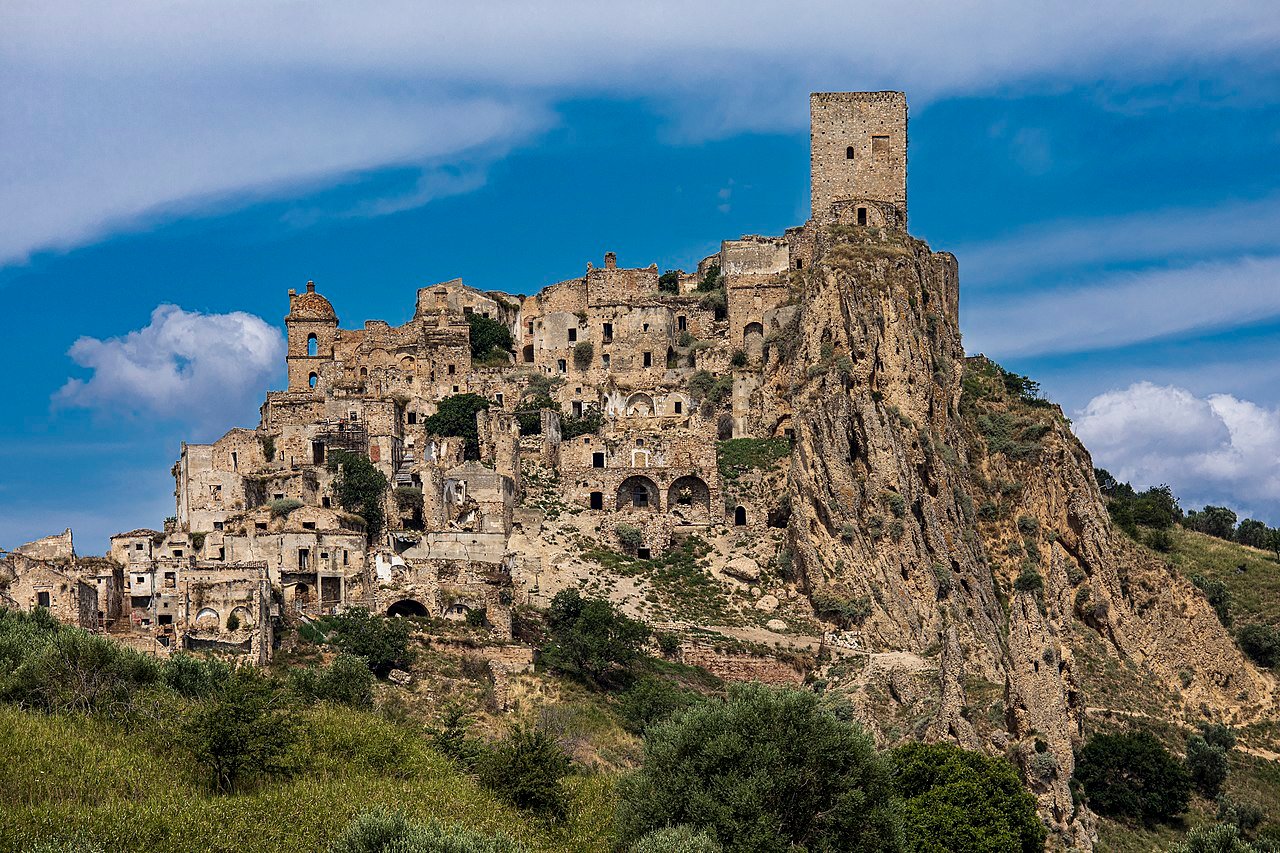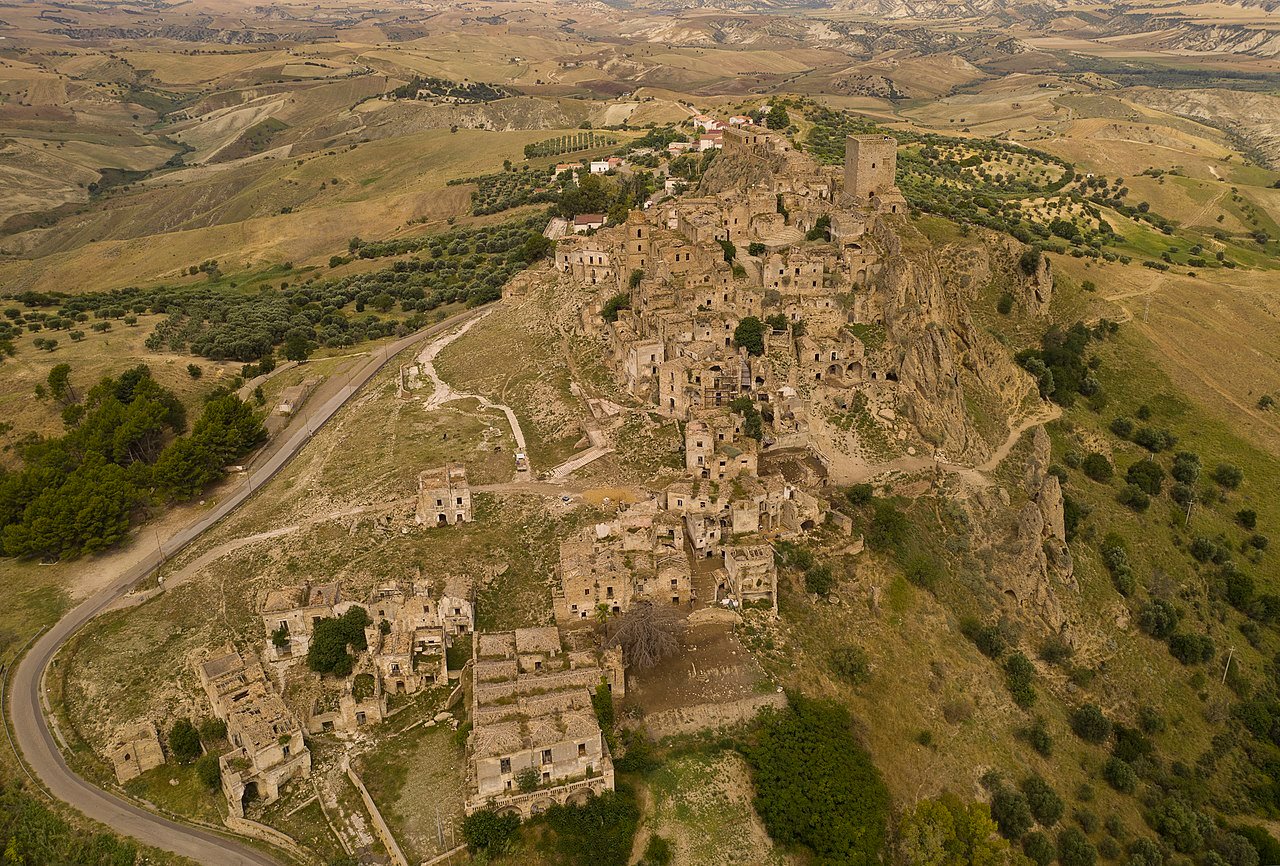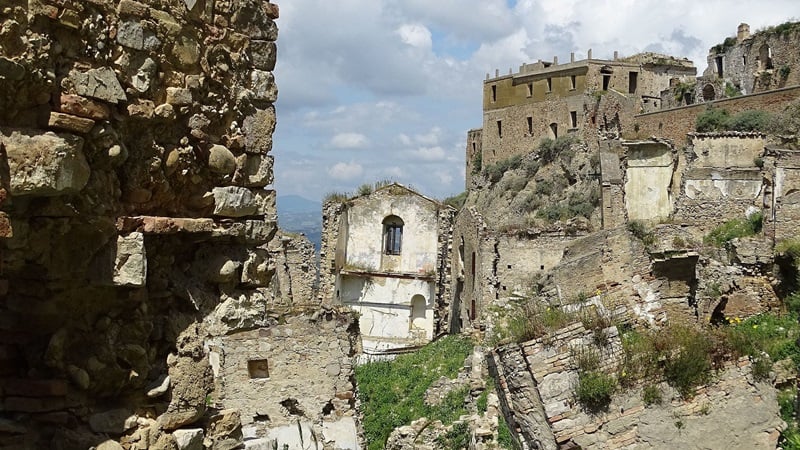
Craco, a ghost town in Italy, located in the province of Matera about twenty-five miles inland from the Gulf of Taranto, was once inhabited by Greeks.
The medieval village of Craco in Magna Graecia is typical of the hill towns of the region with mildly undulating shapes and the lands surrounding it sown with wheat.
Around 540 AD, the area was called “Montedoro” and was inhabited by Greeks who moved inland from the coastal town of Metaponto. Tombs have been found dating from the eighth century, suggesting the original settlement dates back to at least that time.
Today, earthquakes, landslides, and a lack of fertile farming land have contributed to the abandonment of Craco.

History of the ghost town of Craco
The inhabitants of the town grew from 450 in 1277 to 2,590 in 1561 and averaged around 1,500 in succeeding centuries. A plague struck in 1656, killing hundreds and significantly reducing the population.
By 1799, there was enough impetus to change the feudal system, and an independent municipality was established. In 1815, it was decided that the town was large enough to divide into two separate districts.
From 1892 to 1922, over 1,300 Crachesi left to settle in North America because poor agricultural conditions created desperate times, as the land was not producing enough for the people.
During the mid-twentieth century, recurring earthquakes began to take a toll on the town. Between 1959 and 1972, portions of the village were severely damaged and rendered uninhabitable by a series of landslides.

The geological threat to the town was known to scientists since 1910 due to Craco’s location on a hill of Pliocene sands overhanging the clays with ravines causing progressive incisions.
Now, Craco is uninhabited. Guided tours allow participants to explore the ruins wearing hard hats. From afar, Craco resembles a painting with stairways and houses stacked on top of each other.
Up close, its advanced state of decay is obvious. There are towers where no bells chime, and rusted balconies where families once hung their washing. Weeds sprout at the altar of San Nicola church, whose nave is open to the sky.
In more recent times, Craco has found fame as a film set—scenes from the Italian movie adaptation of Christ Stopped at Eboli were shot here. Christ did finally make it as far as Craco for the filming of Mel Gibson’s Passion of the Christ.
As beautiful as Craco is, the land and location have proven unsuitable for sustaining habitation.
Related: Why Was Italy Called Great Greece (Magna Graecia)?
See all the latest news from Greece and the world at Greekreporter.com. Contact our newsroom to report an update or send your story, photos and videos. Follow GR on Google News and subscribe here to our daily email!



